Related Research Articles
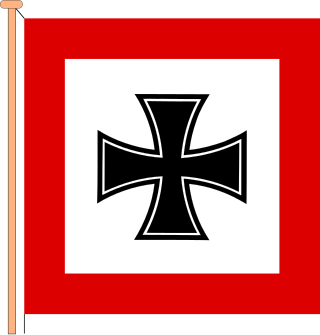
The Oberkommando des Heeres was the high command of the Army of Nazi Germany. It was founded in 1935 as part of Adolf Hitler's rearmament of Germany. OKH was de facto the most important unit within the German war planning until the defeat at Moscow in December 1941.
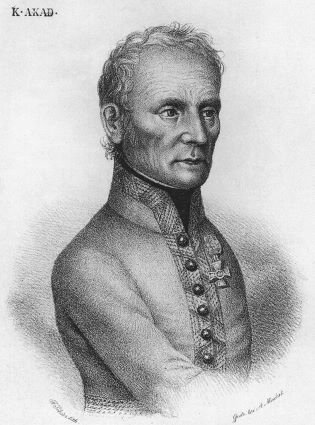
Karl Freiherr Mack von Leiberich was an Austrian officer. He is best remembered as the commander of the Austrian forces that capitulated to Napoleon's Grande Armée in the Battle of Ulm in 1805.

Friedrich Karl Ferdinand Freiherr von Müffling, nicknamed Weiss was a Prussian Generalfeldmarschall and military theorist. He served as Blücher's liaison officer in Wellington's headquarters during the Battle of Waterloo and was one of the organizers of the final victory over Napoleon. After the wars he served a diplomatic role at the Congress of Aix-la-Chappelle and was a major contributor to the development of the Prussian General Staff as Chief. Müffling also specialized in military topography and cartography.

The Oberste Heeresleitung was the highest echelon of command of the army (Heer) of the German Empire. In the latter part of World War I, the Third OHL assumed dictatorial powers and became the de facto political authority in the Empire.
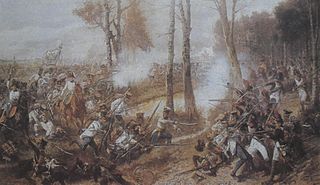
The Imperial-Royal or Imperial Austrian Army was the armed force of the Habsburg monarchy under its last monarch, the Habsburg Emperor Francis II, composed of the Emperor's army. When the Holy Roman Empire was dissolved in 1806, it assumed its title of the troops of the Austrian Empire under the same monarch, now known as Emperor Francis I of Austria.
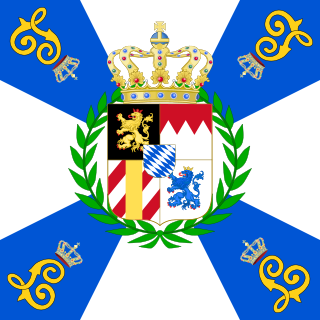
The Bavarian Army was the army of the Electorate (1682–1806) and then Kingdom (1806–1918) of Bavaria. It existed from 1682 as the standing army of Bavaria until the merger of the military sovereignty of Bavaria into that of the German State in 1919. The Bavarian Army was never comparable to the armies of the Great Powers of the 19th century, but it did provide the Wittelsbach dynasty with sufficient scope of action, in the context of effective alliance politics, to transform Bavaria from a territorially-disjointed small state to the second-largest state of the German Empire after Prussia.

Johann Nepomuk Joseph Florian, Graf von Triva was a Bavarian General der Artillerie. He was the first War Minister of the Bavarian kingdom.
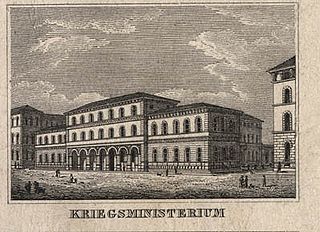
The Ministry of War was a ministry for military affairs of the Kingdom of Bavaria, founded as Ministerium des Kriegswesens on October 1, 1808 by King Maximilian I Joseph of Bavaria. It was located on the Ludwigstraße in Munich. Today the building, which was built by Leo von Klenze between 1824 and 1830, houses the Bavarian public record office, Bayerisches Hauptstaatsarchiv und Staatsarchiv München.

Clemens or Klemens Wenzel Freiherrvon Raglovich und zum Rosenhof was a Bavarian General der Infanterie.

Johann Heinrich von Schmitt was an officer in the Army of the Holy Roman Empire. He was arguably one of the most successful chiefs of staff; he rose to the rank of Feldmarshalleutnant during the French Revolutionary and Napoleonic wars.

Heinrich Hermann Josef Freiherr von Heß, was an Austrian soldier and field marshal, who entered the army in 1805 and was soon employed as a staff officer on survey work.

Hermann Josef von Kuhl was a Prussian military officer, member of the German General Staff, and a Generalleutnant during World War I. One of the most competent commanders in the German Army, he retired in 1919 to write a number of critically acclaimed essays on the war. Hermann von Kuhl is one of only three recipients to be distinguished with both the "military class" and "peace class" of the Pour le Mérite, Prussia's and Germany's highest honor.

Armeeoberkommando was a command level in the German and Austro-Hungarian armies, especially during the World War I and World War II. It was equivalent to a British, French, American, Italian, Japanese, or Imperial Russian "Army".
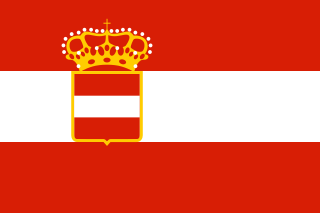
The Supreme Commander of the Imperial and Royal Armed Forces was the ultimate authority of the Austro-Hungarian Armed Forces – which comprised the Army, Navy and Aviation Troops of Austria-Hungary.
The VIII Army Corps was a mixed corps of the army of the German Confederation, which was made up of contingents from Württemberg, Baden and Hesse. Until 1830 contingents from Hohenzollern-Sigmaringen, Hohenzollern-Hechingen and Liechtenstein also belonged to this corps.

The Campaign of the Main was a campaign of the Prussian Army in the area of the River Main against the allies of Austria in southern Germany during the Austro-Prussian War of 1866.

Friedrich Peter Freiherr Duka von Kádár was of Croatian Serb ancestry privy councillor, officer (Feldzeugmeister) and owner of the Hungarian Infantry Regiment No. 39, then State and Conference Council of the Emperor. He was a recipient of the Knight's Cross of the Military Order of Maria Theresa. He is remembered as a great adversary of Napoleon and to have negotiated an armistice with him at Lusigny-sur-Barse.

The Battle of Helmstadt was a battle in the Main Campaign of the Austro-Prussian War on 25 July 1866, between the Prussian Main Army and the VIII Corps of the German Federal Army which consisted of soldiers from the Kingdom of Bavaria.
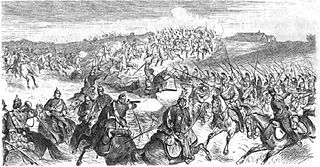
The Battle of Roßbrunn was the last battle of the Main Campaign in the Austro-Prussian War. It took place on 26 July 1866 near Roßbrunn, Uettingen and Hettstadt.
The Fighting at Épuisay was a military conflict of the Franco-Prussian War, it took place on 17 December 1870, in Épuisay where there was a junction of roads from Vendôme and Morée to Saint-Calais. This was a battle between the rear forces of the Armée de la Loire of the French Republic under the command of Antoine Chanzy with the German army in retreat after X Legion being defeated in the Battle of Vendôme on 16 December 1870. Under the command of General Ludwig von der Tann-Rathsamhausen, the German army captured Epuisay and captured 230 prisoners.
References
- ↑ Bavaria - military leaders. Archived October 22, 2008, at the Wayback Machine
- ↑ Wilhelm Volkert, Richard Bauer: Handbuch der bayerischen Ämter, Gemeinden und Gerichte 1799-1980 (German), 1983, p. 336 ff. ISBN 978-3-406-09669-3
- ↑ after 1808 also minister of war
- ↑ ADB (de)
- ↑ ADB:Raglovich, Clemens von (de)
- ↑ 2847 Raglovich, Clemens von, House of the Bavarian history (HdBG).
- ↑ father of Felix Graf von Bothmer, see also (de)